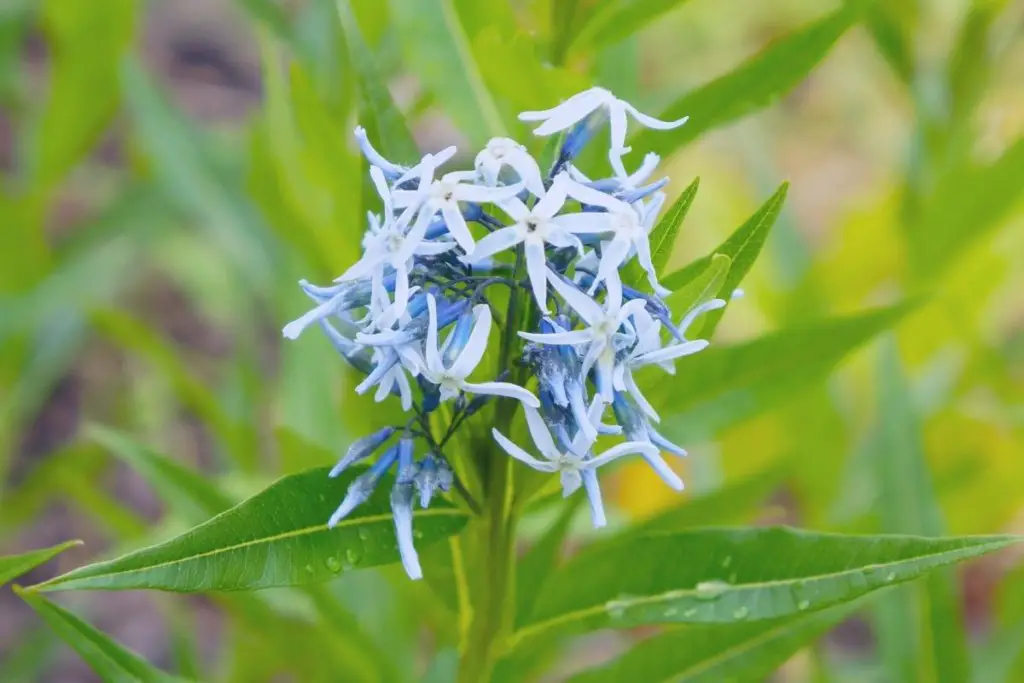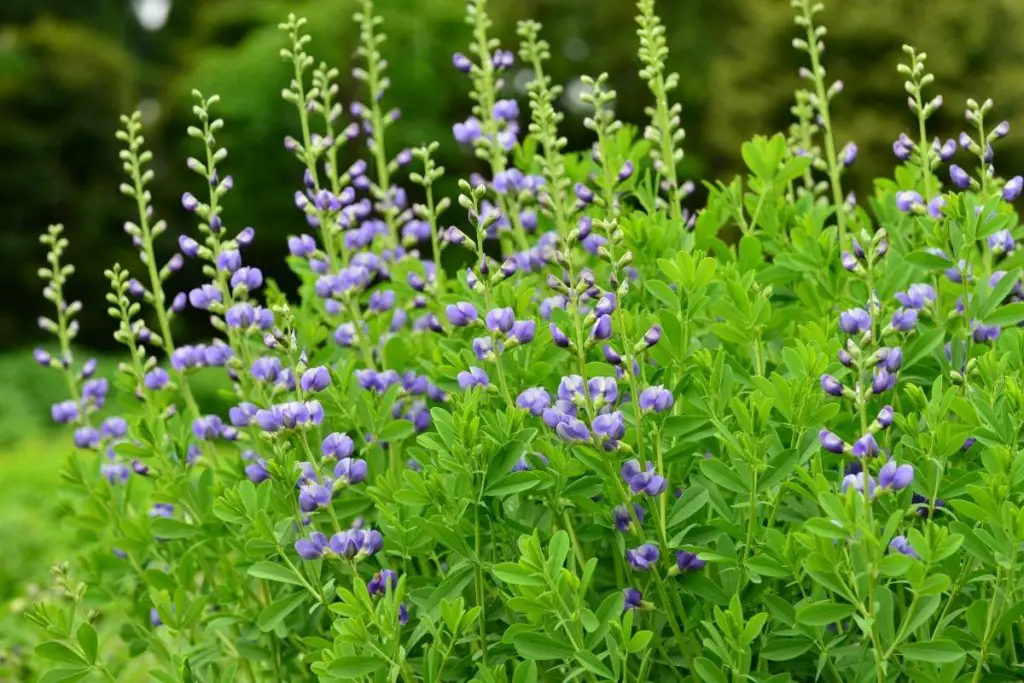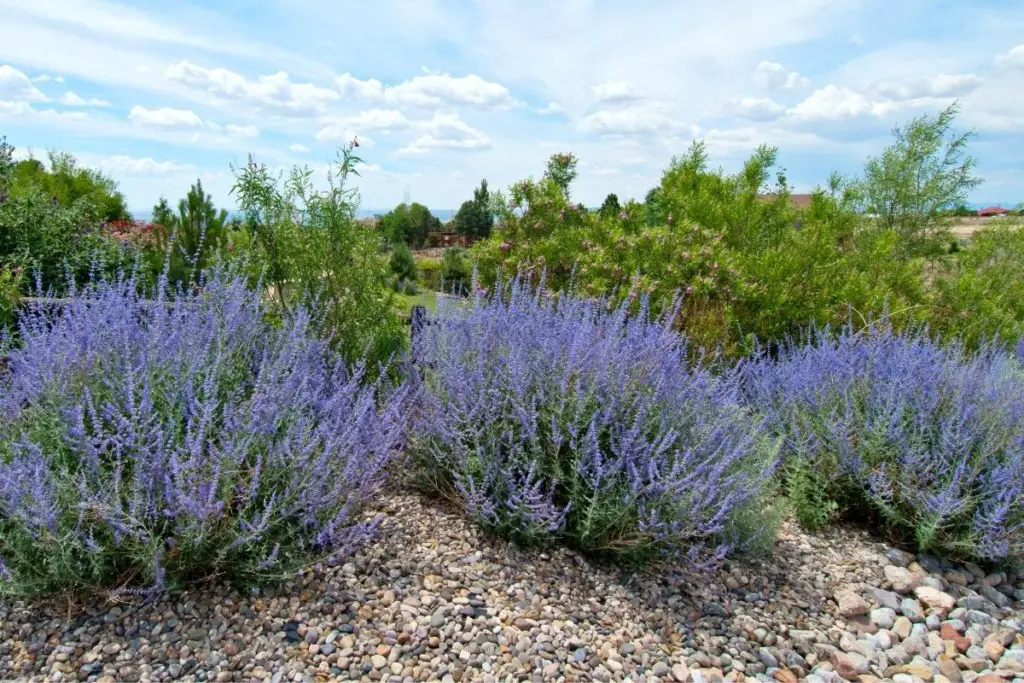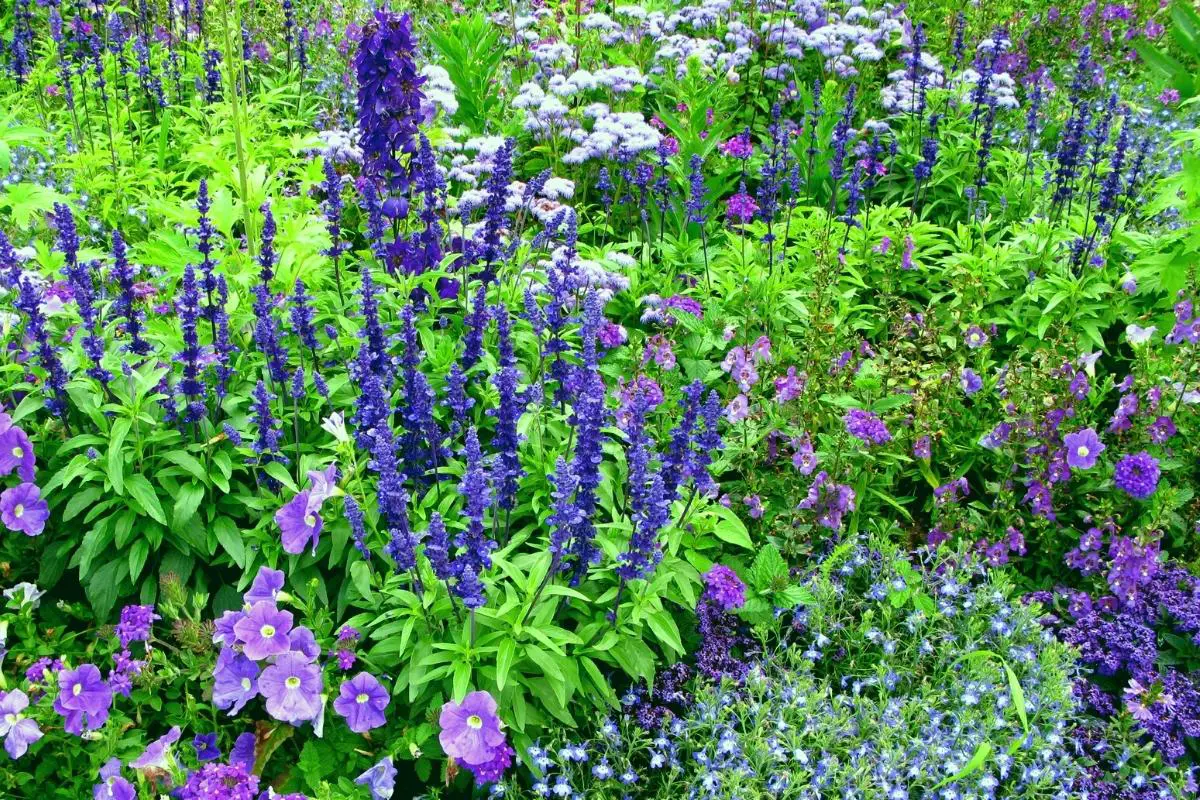In this guide, we’re going to take a look at many of the different types of perennial plants that bloom with vibrant blue flowers. The flowers included in this guide will all require different types of environments and landscapes to thrive, but they’re all unique and admirable in their own way.
Table of Contents
Types of Blue flowers
There are many types of blue flowers and perennials. This includes flowers like the Blue Star – Storm Cloud, the Decadence – Blueberry Sundae, Denim ‘n Lace – Russian Sage, the Stand by Me – Bush Clematis, and Catmint. With just a little care and maintenance you can grow these blue perennial flowers for years to come.
Many of the plants in this guide may be unfamiliar, but many of the facts about these unique perennial flowers may actually surprise you. It’s always important to individually research the expected soil requirements and sunlight conditions that these flowers need. Understanding their native environments and regions can provide additional information about how they thrive.
“Blue! Gentle cousin of the forest-green, Married to green in all the sweetest flowers, – Forget-me-not, the blue bell, – and that Queen of secrecy, the Violet.”
John Keats
Storm Cloud “Blue Star” Flower
The storm cloud ‘plant’ prefers moderate sunlight and can tolerate shady conditions under certain circumstances. This perennial’s appearance provides flowers that appear like vibrant blue snowflakes. The overall mature size of the ‘blue star’ clocks in at a height of about 3 feet and a spread of about 4 feet.
This heat-tolerant perennial flower blooms in late spring and early summer. It can survive in different types of soil as well. The good news is that general maintenance towards this particular plant is not significant, which can be appealing to gardeners that want to create a low-maintenance garden with a wide collection of perennial companion plants.

Decadence ‘Blueberry Sundae’
The Decadence ‘Blueberry Sundae’ perennial flower is a lavender tinted flower that blooms to a mature size of about 3 feet. This plant does best with a minimum of six hours of full sunlight per day. It can also do fairly well with a few hours of full shade during the daytime hours.
In terms of soil, this vibrant vertical plant that is native to North America generally prefers average soil. It will attract various insects, including butterflies and bumblebees. You can expect it to bloom in the early summer or late spring.
It may be surprising that the Decadence ‘Blueberry Sundae’ perennial flower is also drought-tolerant. While it prefers relatively average temperature conditions, it’s also low-maintenance, which is why it can survive dry conditions reasonably well.

Denim ‘n Lace – Russian Sage
Many people are familiar with the plant dubbed ‘Russian Sage’, especially since it’s a common companion plant for other blue perennial flowers. It generally grows to a mature size of approximately 3 feet and performs very well in moderate to heavy sunlight.
The stunning appearance of ‘Russian Sage’ is also appealing to butterflies, bumblebees, and hummingbirds for different reasons. This plan is most prevalent during late summer and early fall.
For optimal growing conditions, the ‘Russian Sage’ plant is going to need to be exposed to full sun for at least half of the day. After receiving full sunlight for about six hours or more, partial sunlight or moderate shady conditions will be acceptable.
Even though it may not be the most popular blueish perennial flower of its kind, it provides a vibrant eye-catching appearance that most people will fall in love with. It’s an excellent companion plant for ‘Black Eyed Susans’ and ‘Echinacea’. Coneflowers are the most popular type of companion plant for the ‘Russian Sage’, but that doesn’t mean that other types of flowers have to be completely ignored.

Stand by Me – Bush Clematis
Stand by Me Bush Clematis is a blue perennial flower that is non-vining. It prefers to be staked up, caged, or planted near other plants that it can get support from. The flowers are blue ‘bells’ that hang downward. The Stand by Me Clementis is herbaceous, so the above-ground flowers and greenery die back in the winter, while the vegetation underground stays alive and comes back the following year.
Clematis can be planted in full sun, or partial shade. The trick with these is that the base of the plant and its roots must be fully shaded. Companion plants for Clematis are as follows: Hemerocallis ‘Ruby Spider’, Salvia ‘Violet Riot’, and Paeonia ‘Bartzella’.
Catmint
Catmint is a Herbaceous perennial that has stunning blue flowers. It’s a hardy plant that will grow very well with little maintenance and care. Catmint prefers full sun but it can also do well in partial shade. It should be planted from spring to early fall. They need to be watered well during the transition where they are being established. After that, supplemental watering will not be needed.
Catmint is related to catnip, however, catmint has beautiful flowers and a strong structure, while catnip tends to be weedy. Bloom time is late spring to early fall. The best part about these types of blue flowers is that they are hardy, drought-resistant, and take very little care after they become well established.

Check out another blue perennial – Brunnera here.
What Common Flowers are Blue?
Perennial flowers are great for many reasons, however, there are also great common flowers that are blue and beautiful. Here’s a short list of common blue flowers that you may want to plant alongside your perennials. Fact: blue offers a cool soothing tone to your garden and can have a calming effect. Source.
Common blue flowers:
- Mountain Larkspur
- Bird-Bill Dayflower
- Sea Holly
- Poppy Anemone
- Periwinkle
- Monkshood
- Love-in-a-Mist
- Iris
- Hydrangea
- Hyacinth
- Great Lobelia
- Mountain Bluets
When it comes to life, I can’t think of anything quite as exciting as growing flowers and plants. The colors, the fragrances, the time you get to spend outside among the creatures, it’s like therapy for me. Blue flowers are some of my favorite types of flowers, and I will continue to add splashes of blue to my landscape for years to come.
Blue flowers are lovely, but there are more colors than just blue! Check out some other flowers that will knock your socks off.
Related Questions
On which continents are perennial blue flowers primarily found?
Depending on the type of plant, you can find common perennial blue flowers in just about any type of ecosystem and environment. Many of them are found in prairie and woodland regions across Europe and North America. There are no limits to where these types of flowers survive, but specific species can certainly be native to a specific continent or region.
On average, how much sunlight do perennial blue flowers need per day?
Most of the flowers included in this guide require at least six hours of full sunlight per day. Some are more tolerant than others in terms of handling dryer conditions or poorer soil conditions. With that being said, most of these plants will be just fine as long as they have at least six hours of sunlight, but some can also tolerate shady conditions.

